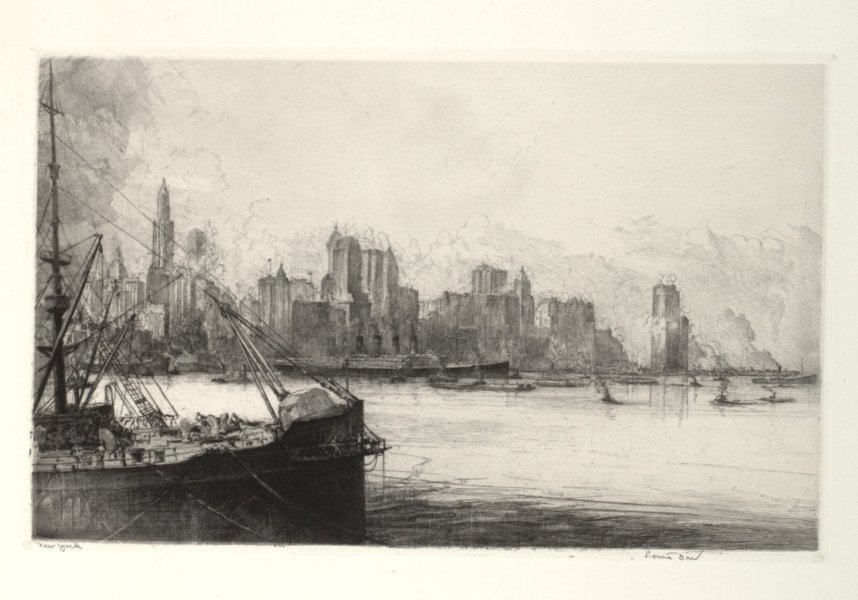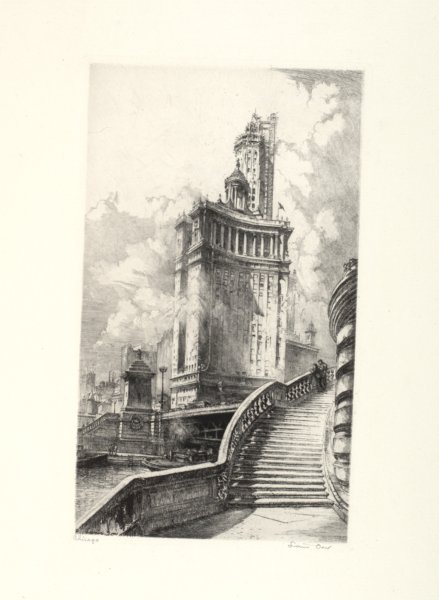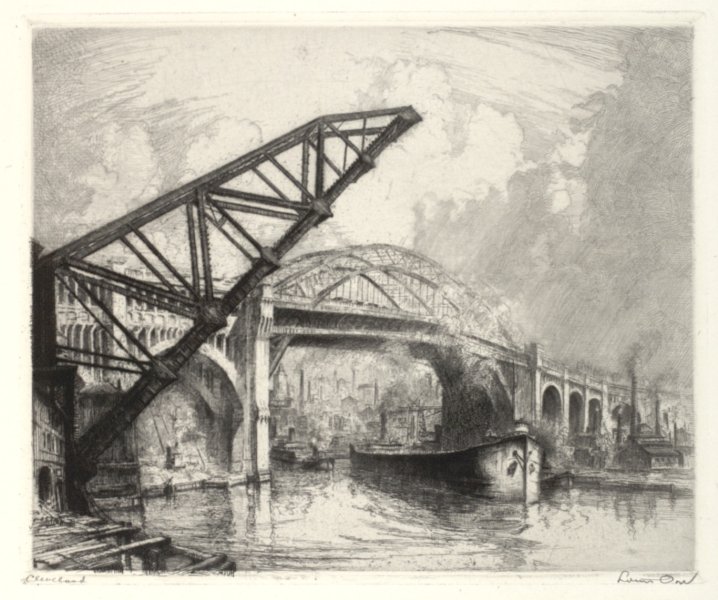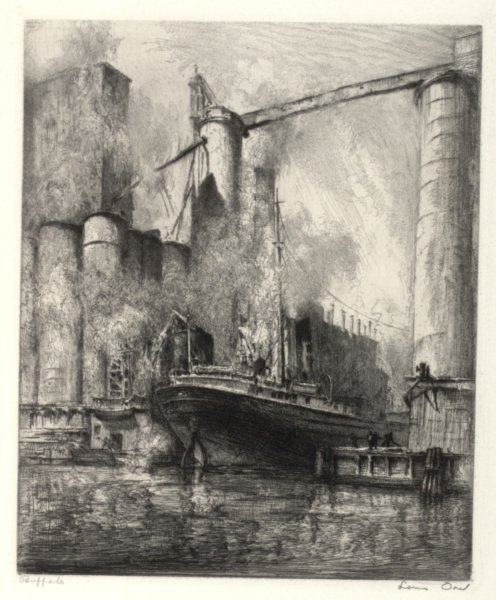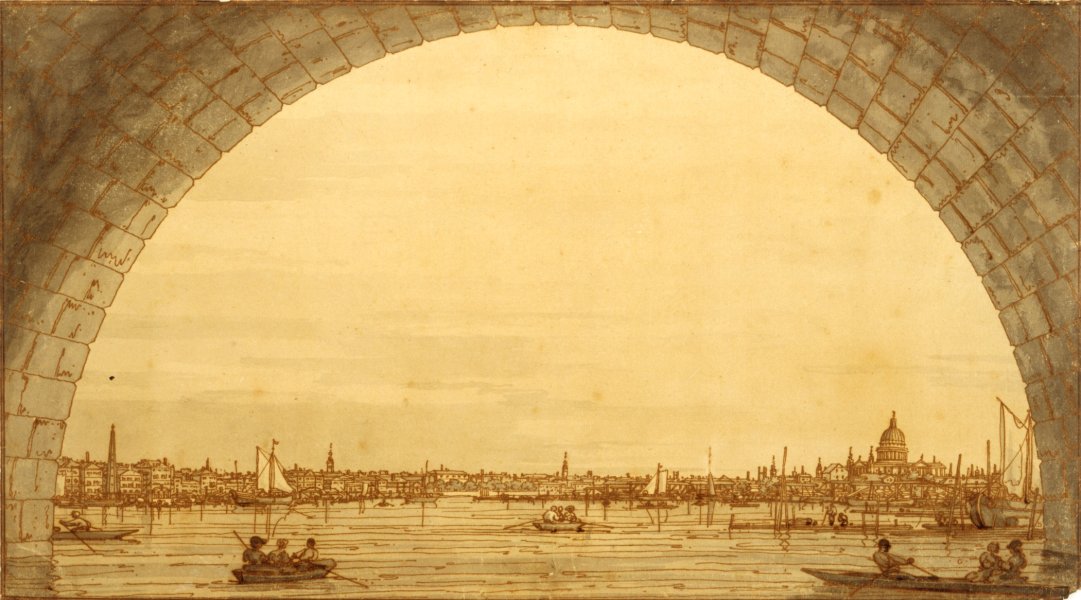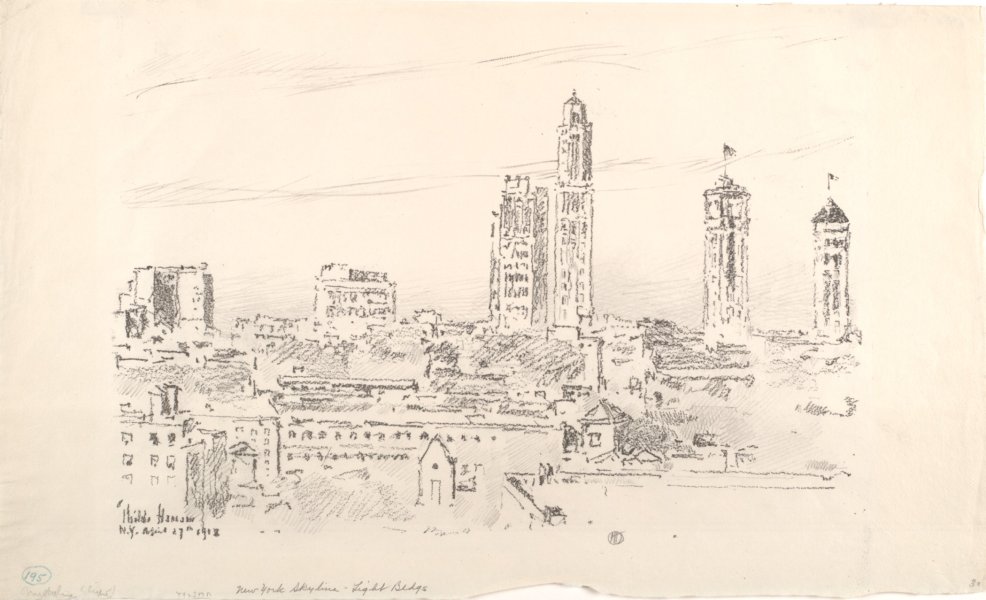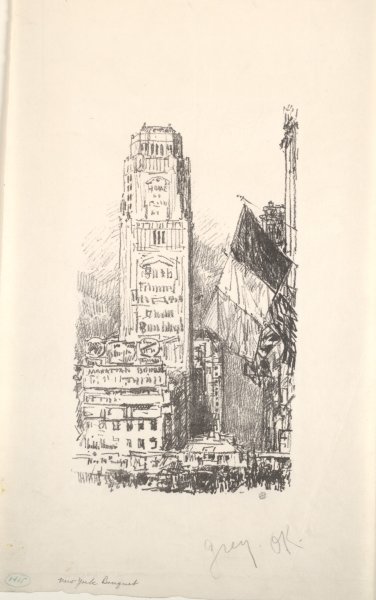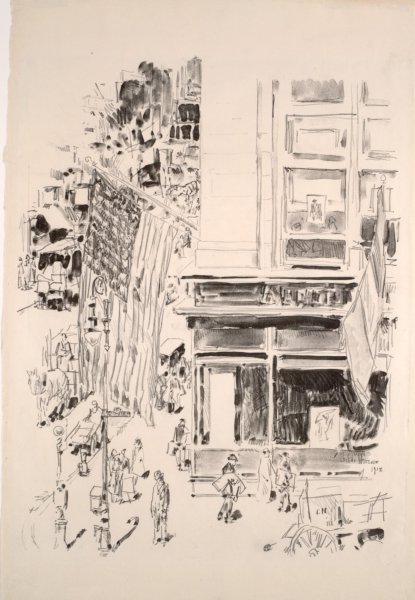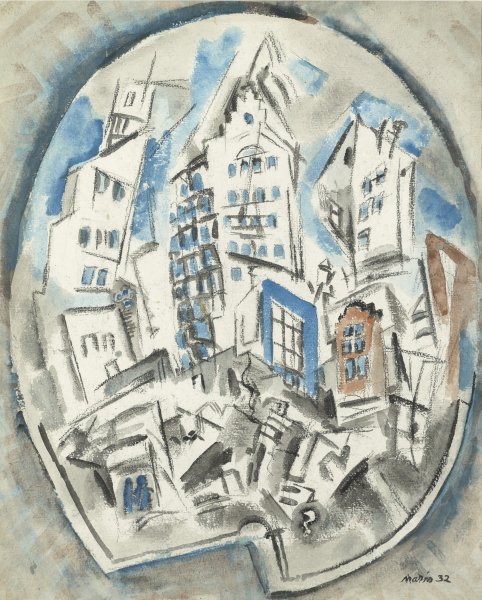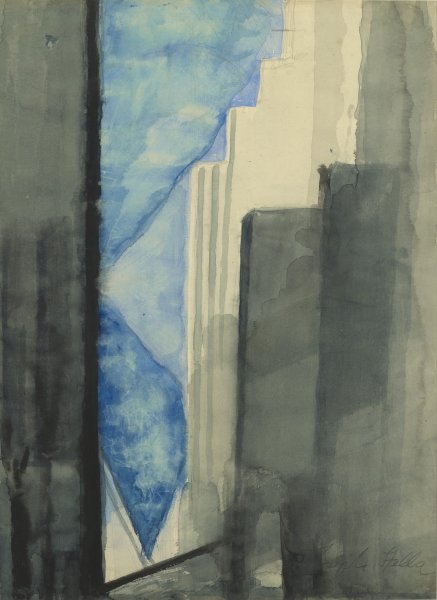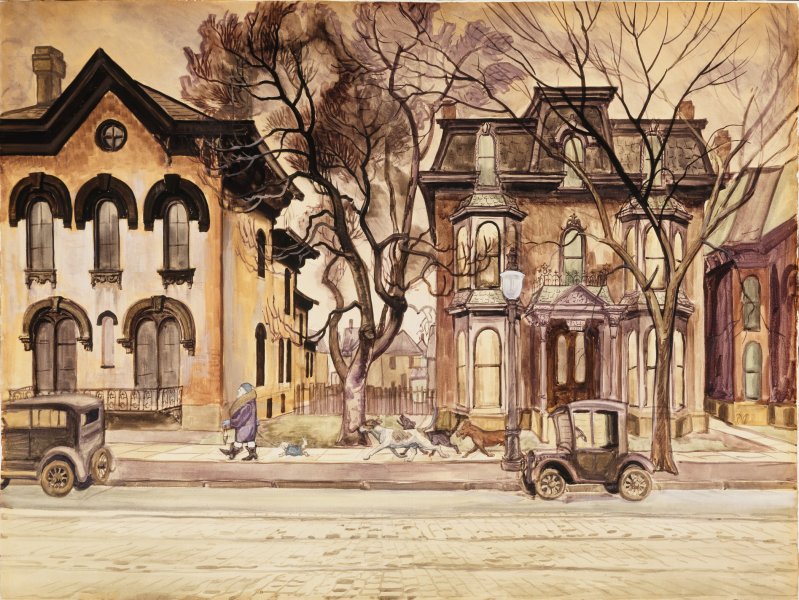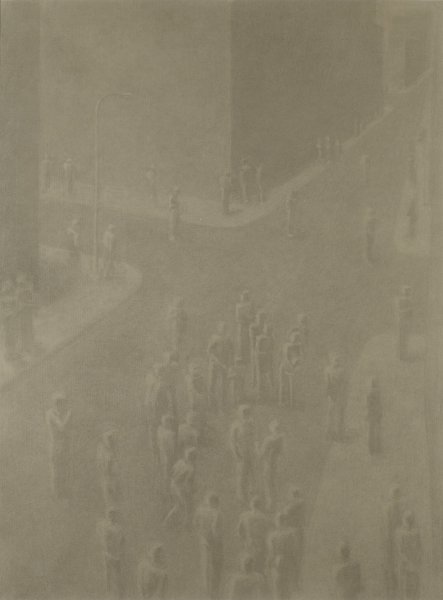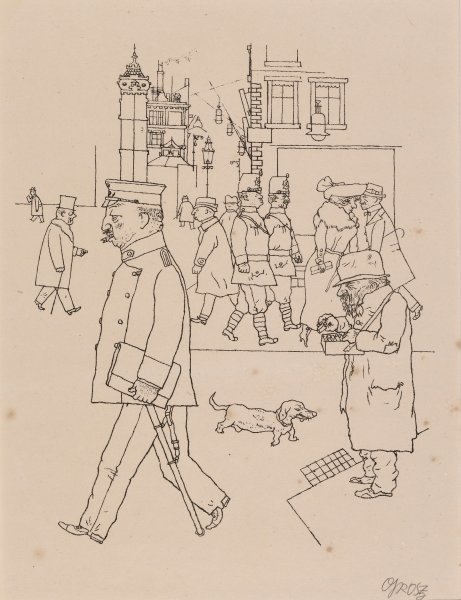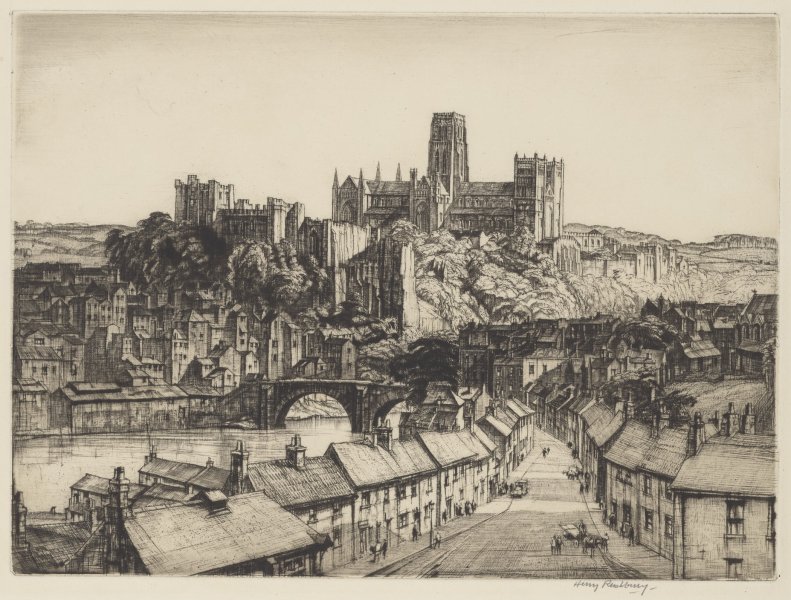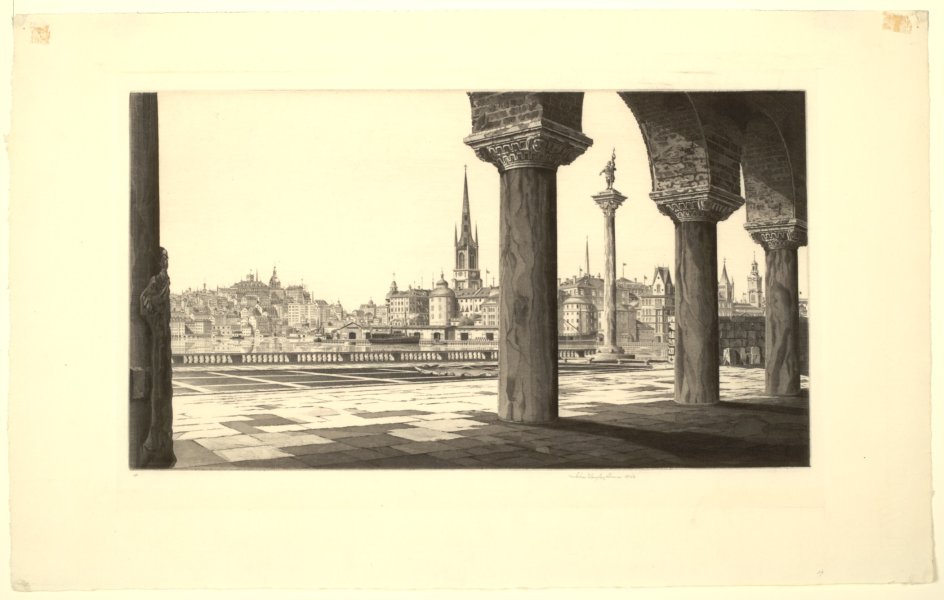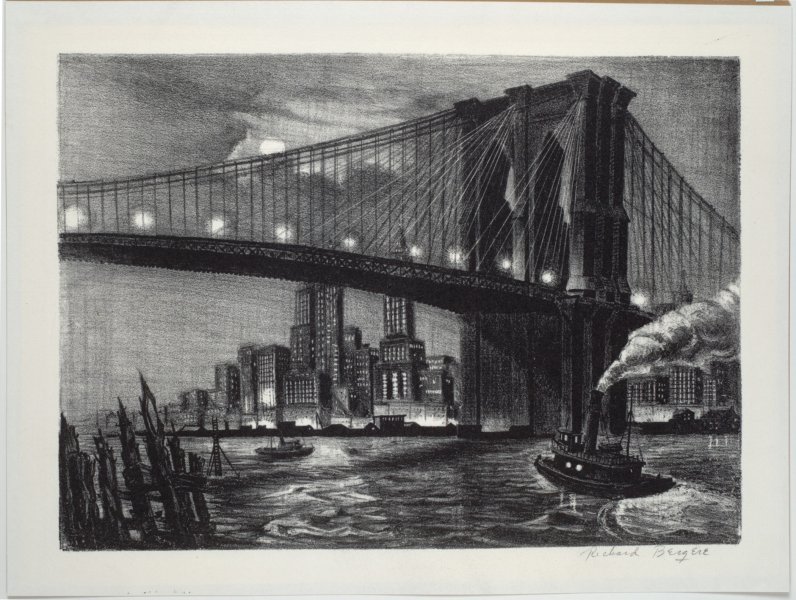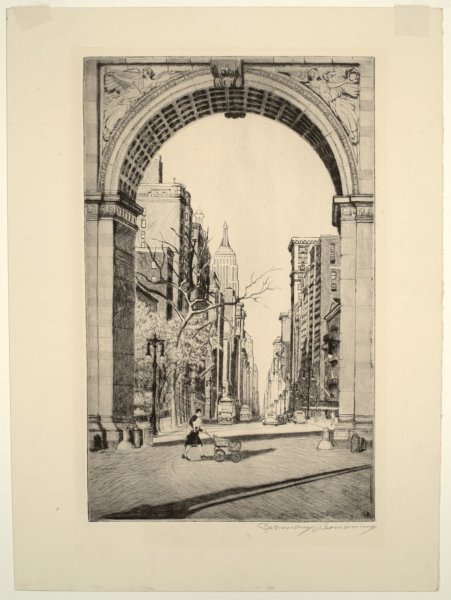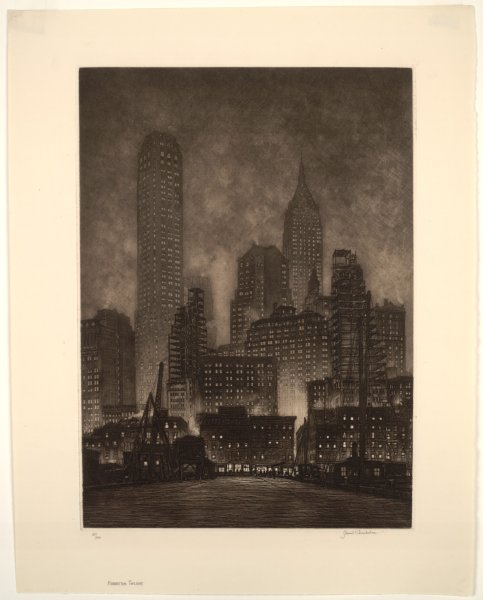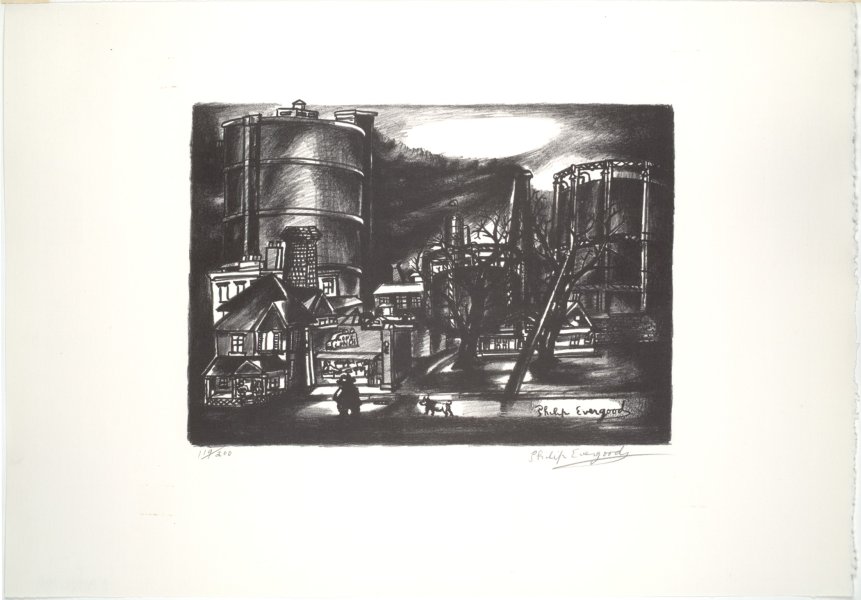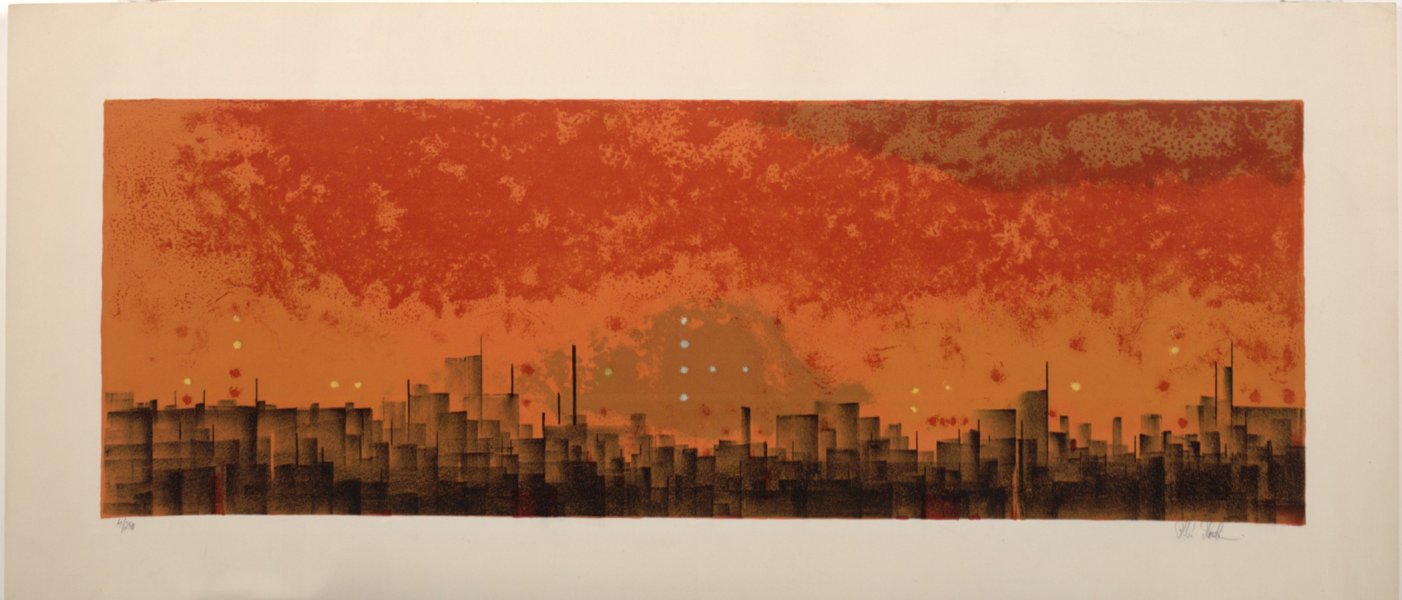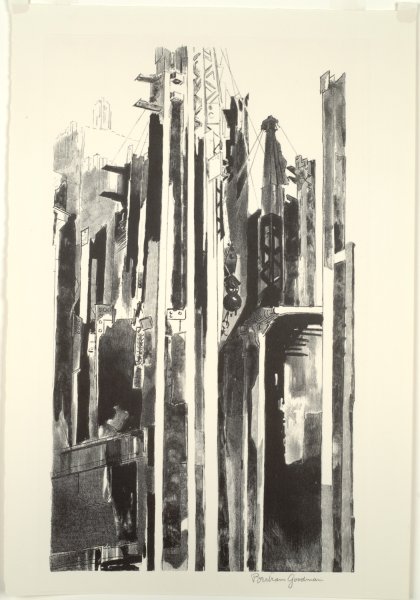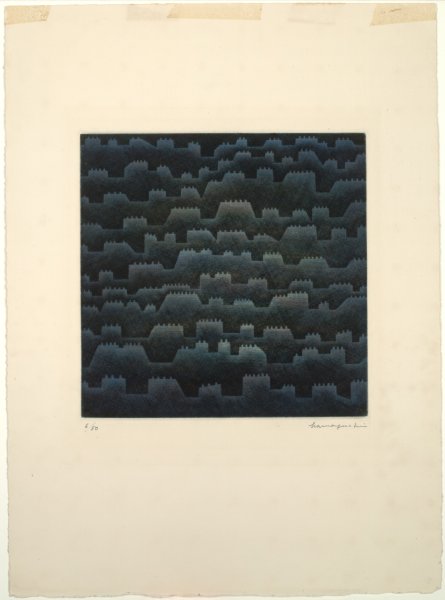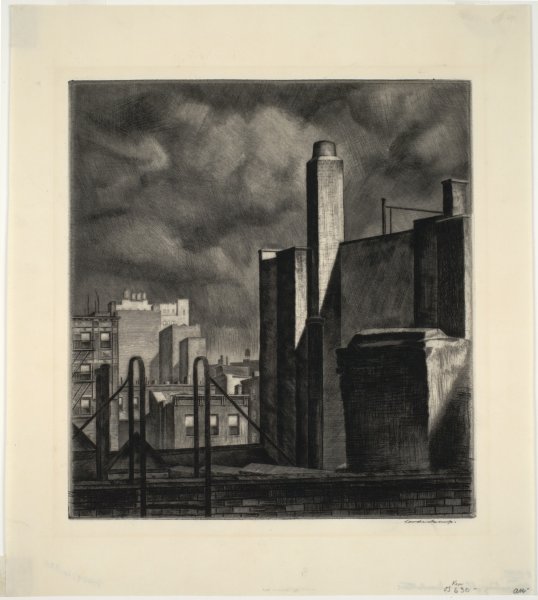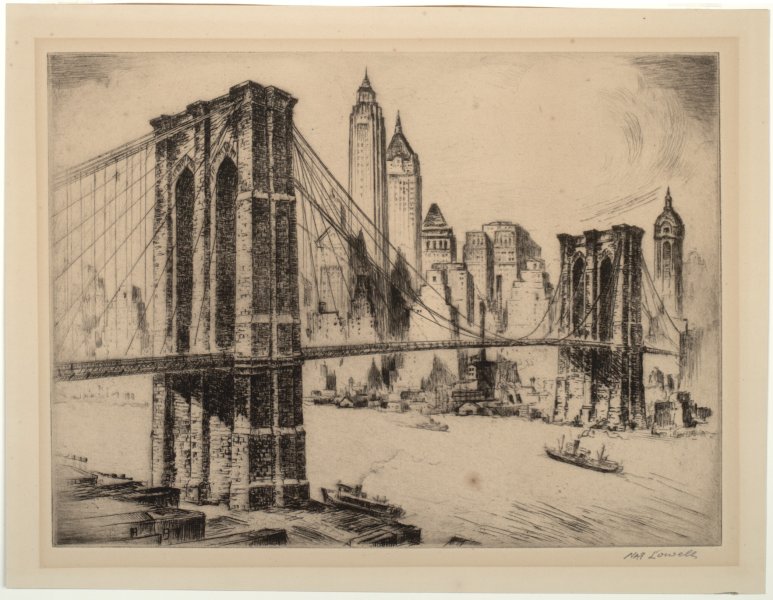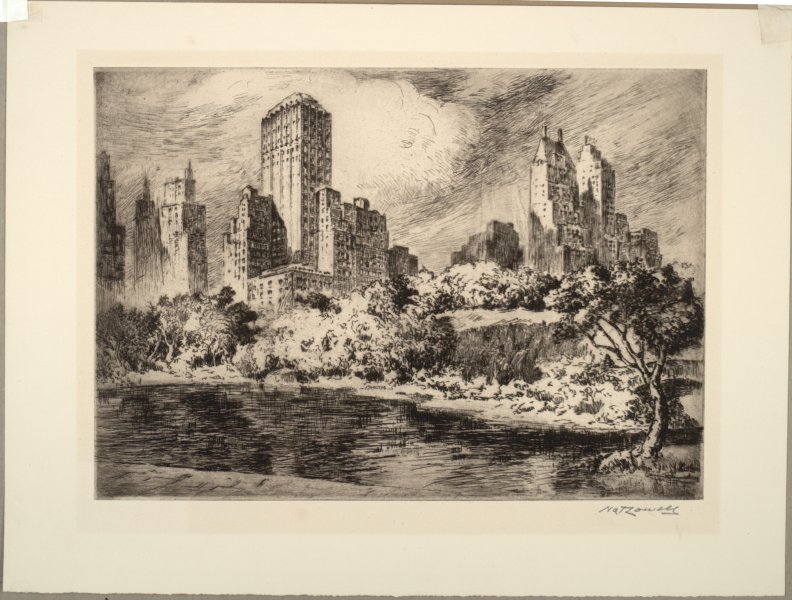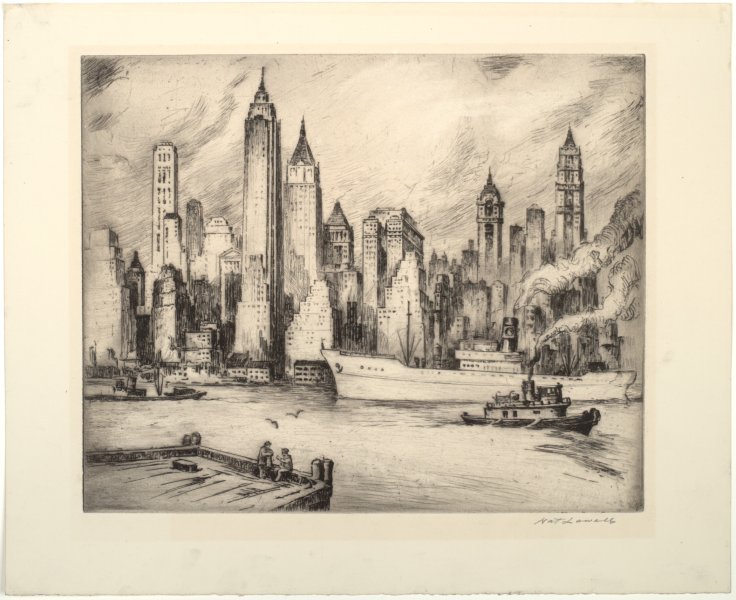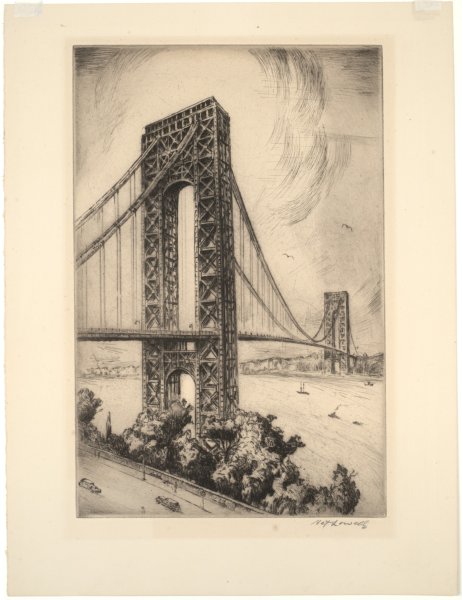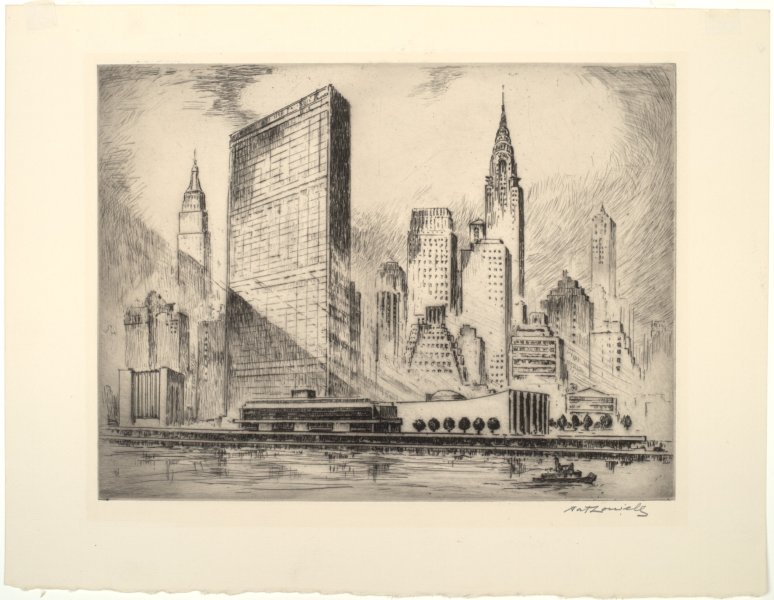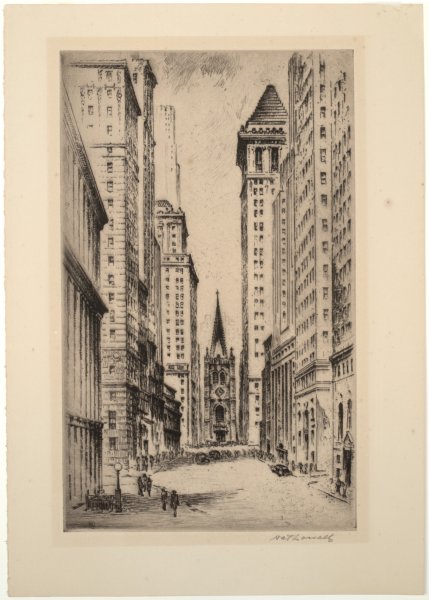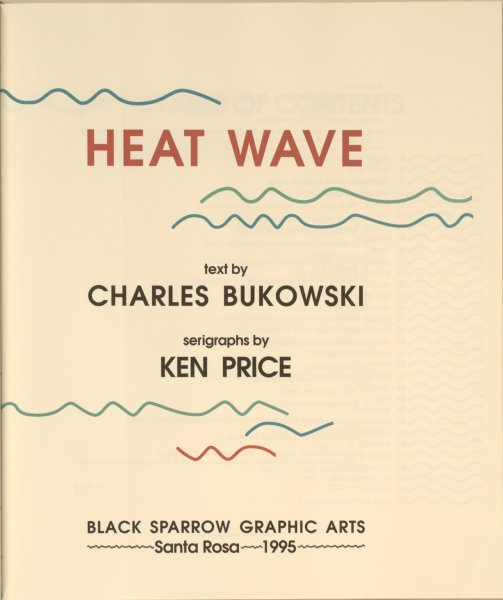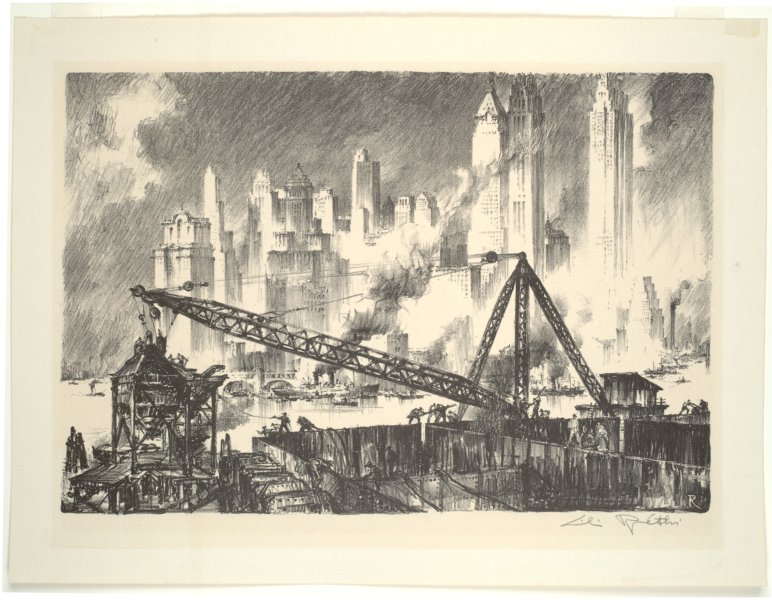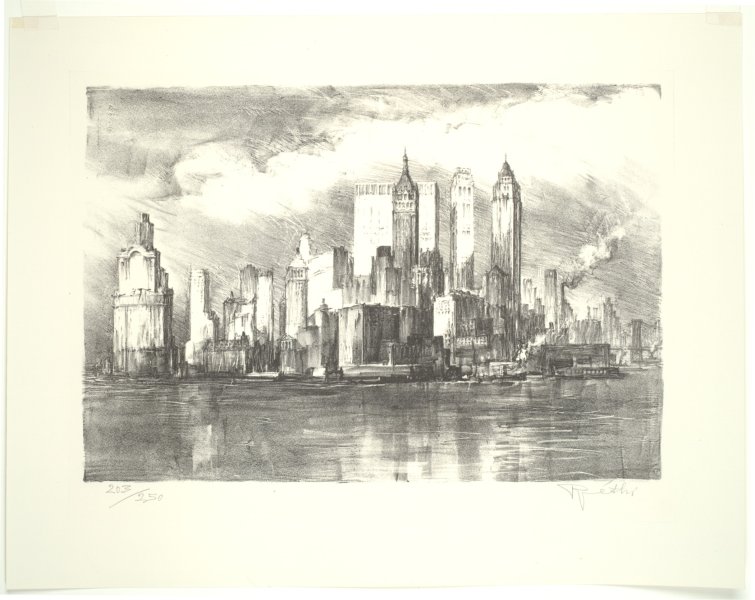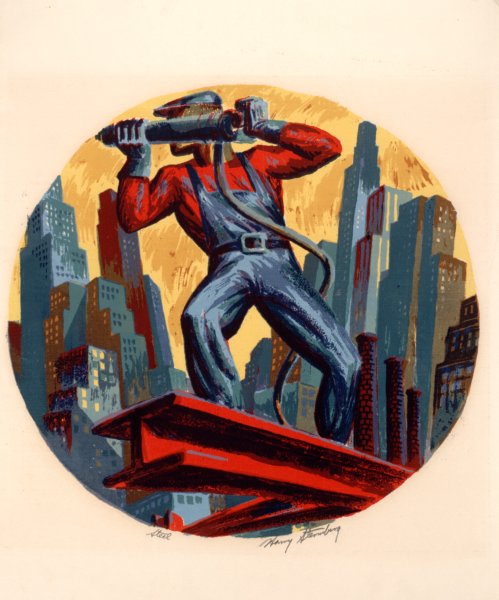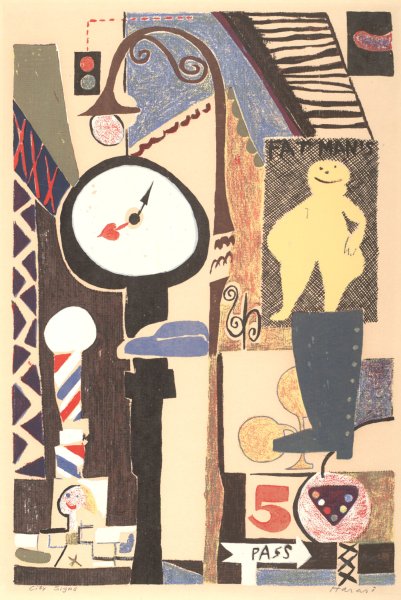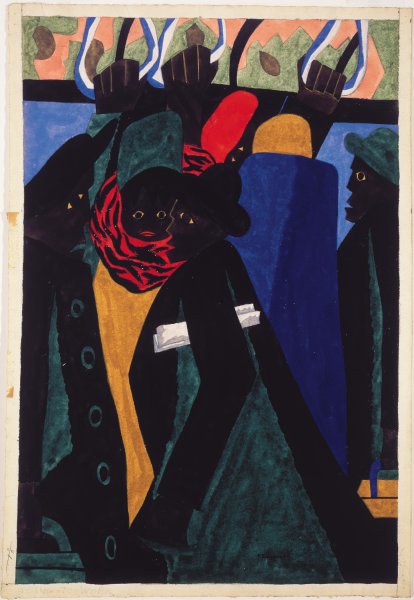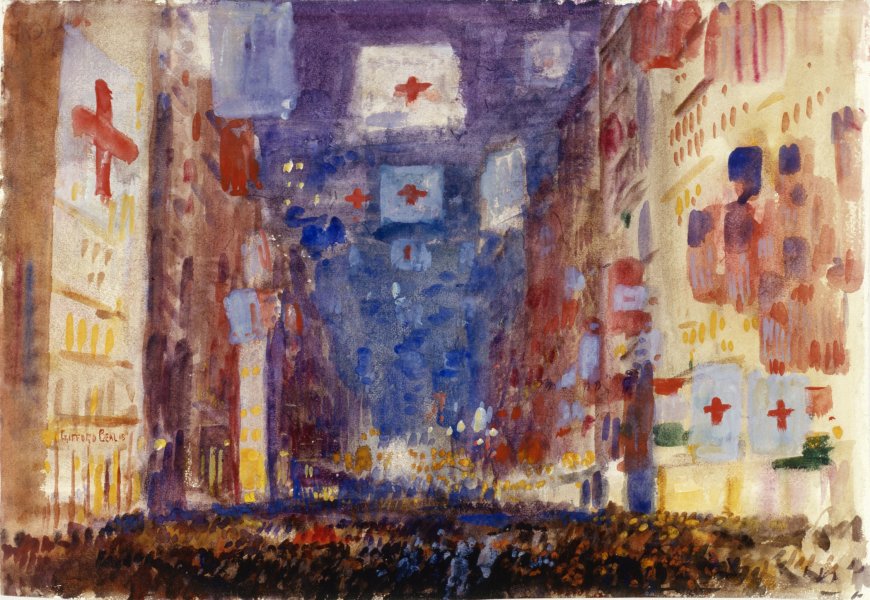In the City: Works on Paper from the Collection
Friday, January 18, 2008–Sunday, April 6, 2008
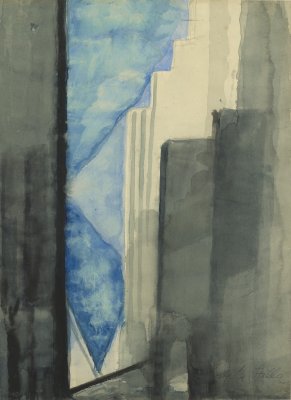
Joseph Stella (American, born Italy, 1877-1946). Skyscrapers, ca. 1920. Watercolor and pencil on paper, 23 1/8 x 16 5/8 inches (58.73 x 42.22 cm). Charles Clifton and Edmund Hayes Funds, 1975 (1975:3) .
Artistic interpretations of “the city” entail a fascination with architecture, industry, and the vibrancy of metropolitan life. This selection of works on paper offered a unique portrait of modern civilization by revealing facets of urban living through an exploration of anonymity, industry, commerce, and life in the steel jungle.
At the end of the 19th century, artists began to explore aspects of the city that had an impact on the lives of the people who inhabit it. During the early 20th century, it is portrayed as intangible, exciting, and fresh in man’s attempt to domesticate the urban beast. As the years progress, however, the city increasingly becomes a beacon of history that expands further into the grit and novelty of industry, skylines, steel, and skyscrapers.
While Gifford Beal’s Armistice Day, 1918, depicts the early morning revelry and excitement as the city of New York celebrates the end of World War I with a lush palette and loose forms, Joseph Stella utilizes a similar style to depict an abstracted bird’s-eye view of urban architectural icons in Skyscrapers, ca. 1920. In recent times, the life and soul of the city has morphed from industrial to corporate—a notion affirmed in Ken Price’s portfolio Heatwave, 1995, which captures the city as a sumptuous arena for sounds, sights, color, and experiences among commercial billboards and smog, and through windows that look out onto the cityscape.
This exhibition was organized by Associate Curator Holly E. Hughes.
Related Artworks
No image available,
but we’re working on it
